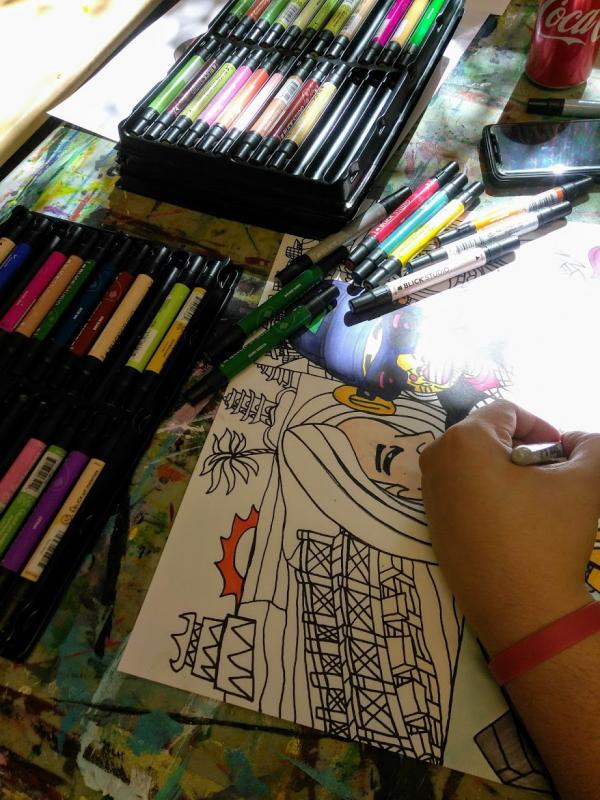At a Seattle Gallery, Community Healing in the Time of COVID-19

When Seattle’s SEEDArts first developed the idea for two exhibits involving the healing arts and Asian-American communities, the organization had no idea that the exhibitions, which were supported by the Arts Endowment, would coincide with a pandemic. Now, with a nation sharing a collective sense of grief and anxiety, exploring the therapeutic value of the arts and how other cultures approach mourning not only seems timely, but perhaps critical.
“Everyone's dealing with their fear and their grief—grief that the world has changed in many ways, or maybe they have lost people themselves to the virus,” said Betsy Fetherston, the director of the Columbia City Gallery, an artist collective whose community exhibition space was set to host the two exhibits, Unbound: Beautiful 2020 and The Resting Place, were to be held. “I think for the larger community to have something to look at that talks about grief, how to transform grief, and how to move forward could be very cathartic.”
A component of SouthEast Effective Development (SEED) Seattle, SEEDArts has long used the arts as a force to enhance community life for local residents. Their efforts include establishing the Columbia City Gallery, the Rainer Arts Center performing arts venue, the radio station KVRU 105.7 FM, and building affordable artist studios. Not only have these initiatives helped revitalize a once-blighted area economically, but they have built understanding among an ethnically diverse neighborhood by sharing the voices and stories of local residents through the arts. Kathy Fowells, the director of SEEDArts, estimates that 40 percent of Seattle’s South End area is foreign-born, with 40 different cultures and 59 languages in the mix.
“There are so few opportunities for traditionally marginalized communities to have their culture shown in the larger community in a positive way, so we try to facilitate that,” said Fowells. “That helps build cross-cultural understanding, which in itself brings community.”
Both exhibits explore how the arts can be a helpful tool in expressing and moving past trauma and loss. Unbound: Beautiful 2020, showcased artwork created during behavioral health art therapy sessions held at the Asian Counseling and Referral Service (ACRS), which offers a variety of social services for Asian and Pacific Islander communities in Seattle. The show was forced to close prematurely because of COVID-19.
During ACRS workshops, participants “work through grief in a nonverbal environment in a nonlinear space,” said Fetherston. “Stories come out in drawings and in artwork that might not be able to be verbalized because everyone's speaking different dialects and different languages. All of it comes out on the paper and in the artwork.”
The exhibition process was an equally powerful part of their healing. “To have that artwork appreciated by the wider community they said was incredibly validating,” said Fowells, an experience that was compounded given that several of the artworks sold.
The second show, The Resting Place, will focus on work by emerging Filipino-American artists that highlights the rituals associated with grieving in Filipino culture, a process that is typically more communal and celebratory than American grieving traditions. The opening for The Resting Place has been postponed, but will likely take place later this summer, either in-person or virtually.
“I think it will be a really nice opportunity for the community as a whole to experience how another culture deals with death and grieving, and sees it in a more positive light and as more of a transition that's to be celebrated and marked with cultural activities,” said Fowells, of the COVID-19 environment that will now surround the exhibit. “I think it might be really good for people to be able to witness that.”
But regardless of the current health climate, Fowells said that like all of SEEDArts’ programming, the shows carry a different sort of social healing aspect, by helping bridge the differences among the area’s many diverse residents and building a stronger sense of community.
“When people were in the gallery seeing that artwork, it provided a safe space for the artists and the audiences to share common ground,” Fowells said. “That's what helps enhance cross-cultural understanding. The more we understand each other, the more we can appreciate and respect each other.”




